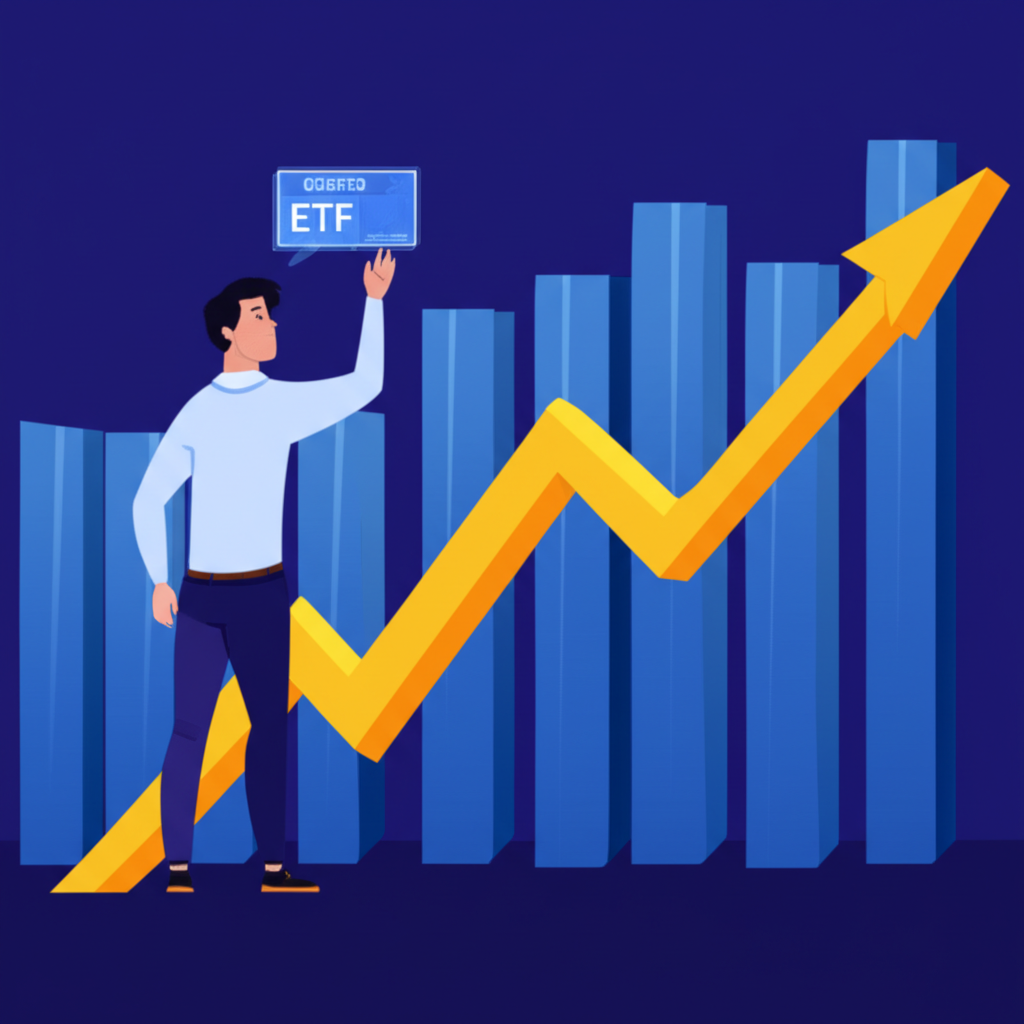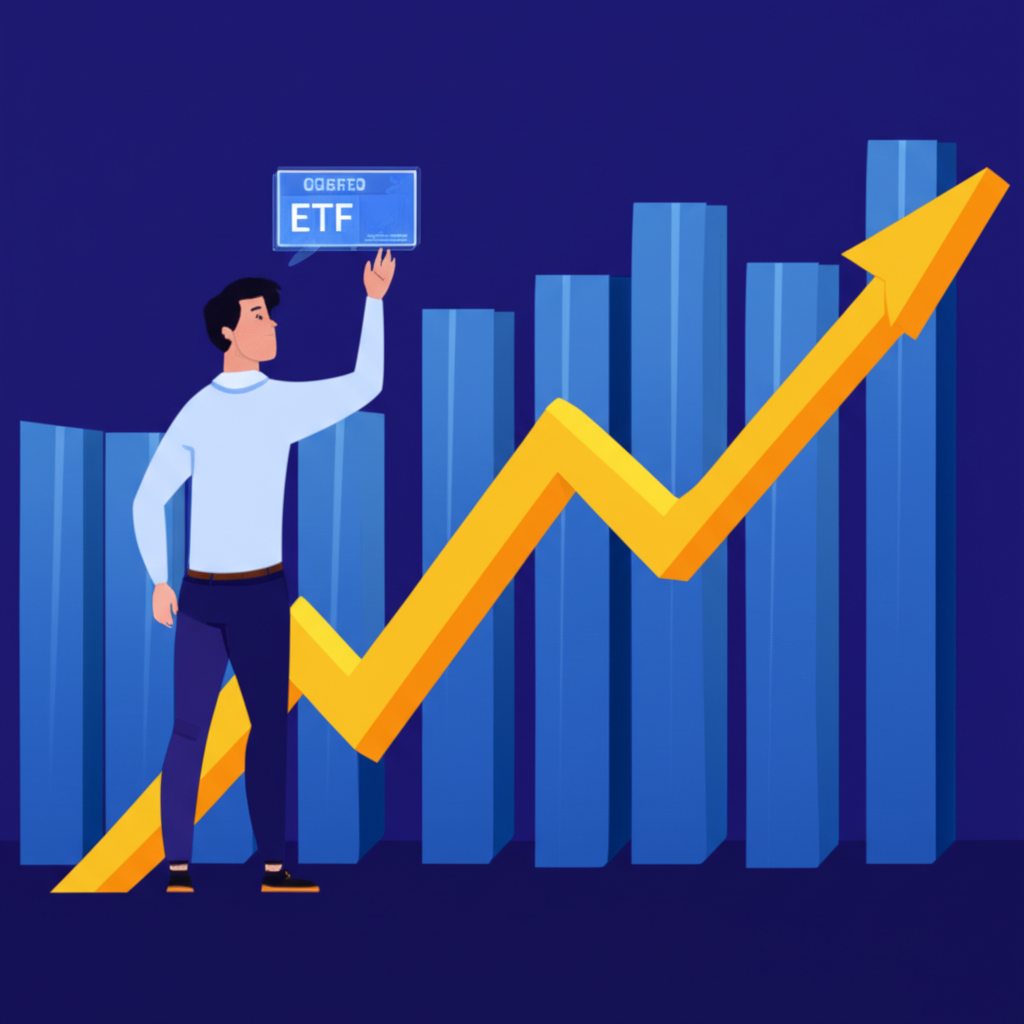Introduction: Navigating the Digital Asset Landscape in the United States
The digital asset market has grown swiftly, drawing in investors throughout the United States. The SEC’s approval of spot Bitcoin exchange-traded funds in early 2024 opened up fresh ways for Americans to tap into cryptocurrencies. Yet this growth forces a key choice: dive into crypto ETFs or go straight for spot cryptocurrency purchases. As US investors gear up for 2025, grasping the core contrasts, upsides, and downsides of these paths proves essential. This guide breaks it all down, zeroing in on US-specific rules, tax rules, and smart strategies to fit the American scene.

Whether you’re a seasoned trader or just starting out, the crypto world blends innovation with challenges. Spot crypto lets you hold the actual assets, while ETFs wrap them in a familiar investment package. Both carry risks tied to market swings, but regulatory shifts and tax details can tip the scales. By exploring these elements, you’ll better position your portfolio amid the ongoing changes in digital finance.

Understanding Spot Cryptocurrency: Direct Ownership in the US
Spot cryptocurrency means buying and holding actual digital assets such as Bitcoin or Ethereum right on a crypto exchange. When you make a spot purchase, the asset becomes yours outright, putting you in charge and linking your returns directly to its market price.
How it operates: You start by setting up an account on a platform like Coinbase or Kraken, then swap US dollars for the crypto of your choice. Once bought, it sits in a digital wallet-either one run by the exchange (a connected “hot wallet”) or your own offline “cold wallet” (like a hardware device) where you manage the private keys. Opting for self-custody with a cold wallet captures the decentralized essence of crypto, free from third-party reliance.
Benefits for American investors:
- Total control: You manage your holdings and keys when using self-custody, avoiding middlemen.
- Opportunities for earning yield: Owners can join staking programs, lend assets, or explore DeFi to generate returns.
- Unfiltered market exposure: Your gains or losses mirror the crypto’s price exactly, free from fee drags or mismatches.
- Decentralized principles: It supports a system beyond banks and brokers, aligning with crypto’s roots.
Drawbacks for American investors:
- Security challenges: Handling your own custody means you’re on the hook-if keys vanish, so do your funds. Exchanges face hack or bankruptcy risks too.
- Custody hurdles: Newbies often struggle with keys, recovery phrases, and wallet protection.
- Tax headaches: IRS rules demand detailed tracking of buy prices for sales, plus income from staking or DeFi, which gets complicated fast.
- Steeper learning curve: You need blockchain know-how, wallet skills, and exchange navigation, unlike straightforward stock apps.
Demystifying Crypto Exchange-Traded Funds (ETFs) for US Investors
Crypto ETFs function as funds listed on stock exchanges, investing in crypto-related holdings. Rather than owning the coins yourself, you buy fund shares that represent those assets or related contracts.
The mechanics: Big financial firms run these, and you trade them via regular brokerages. Their goal is to mirror a single crypto’s price or a mix of them.
Key types for the US in 2025:
- Spot Bitcoin ETFs: These hold real Bitcoin. Since the SEC greenlit them in January 2024, options like BlackRock’s iShares Bitcoin Trust (IBIT) deliver straightforward Bitcoin access without you handling storage.
- Futures Bitcoin ETFs: They trade Bitcoin futures on venues like the CME, available before spot versions. But rolling contracts can cause price drifts from the actual market.
- Upcoming altcoin ETFs: Ethereum spot ETFs might launch by early 2025, with buzz around others, expanding safe crypto options for Americans.
Upsides for US investors:
- Easy entry: Trade them like stocks in your IRA or 401(k), fitting right into standard portfolios.
- Strong oversight: The SEC watches these closely for transparency and fraud prevention-more so than many crypto platforms. Check the SEC’s spot Bitcoin ETF announcement for details.
- Hands-off storage: Pros manage security, sparing you key worries.
- Broad exposure: Some ETFs bundle multiple cryptos or sectors, easing diversification.
- Straightforward trading: Feels familiar if you’re used to stocks or bonds.
Downsides for US investors:
- Ongoing costs: Expense ratios chip away at profits yearly.
- No direct hold: You get fund shares, not the crypto, so no personal use of it.
- Price mismatches: Fees or operations might make ETF performance lag the real asset.
- Issuer risks: Even with rules, the fund company or its keepers could falter.
- Narrow selection: In 2025, Bitcoin leads, Ethereum may follow, but altcoins lag behind spot markets.
Crypto ETFs vs. Spot Crypto: A Head-to-Head Comparison for US Investors in 2025
Weighing spot crypto against ETFs hinges on factors like control, costs, and rules. This breakdown highlights how they stack up for Americans eyeing 2025 opportunities.
| Feature | Spot Cryptocurrency (Direct Ownership) | Crypto ETFs |
|---|---|---|
| Ownership Structure | Direct ownership of the digital asset itself. | Indirect ownership; you own shares of a fund that holds the crypto or derivatives. |
| Custody | Self-custody (cold wallet) or exchange custody (hot wallet). | Managed by the fund manager and institutional custodians. |
| Accessibility | Crypto exchanges (e.g., Coinbase, Kraken). | Traditional brokerage accounts (e.g., Fidelity, Schwab). |
| Regulation (US) | Varying for exchanges and specific assets; often less direct federal oversight compared to securities. | SEC-regulated investment funds, offering a higher degree of investor protection. |
| Tax Implications (US) | Complex cost basis tracking for capital gains/losses, potential for ordinary income from staking/mining. | Typically clearer 1099-B reporting for capital gains; futures ETFs may have “mark-to-market” rules. |
| Fees | Trading fees (maker/taker) on exchanges, network fees for transfers. | Annual Management Expense Ratio (MER), potentially brokerage trading commissions. |
| Security | Personal responsibility for private keys/wallet security, or exchange-specific security risks. | Institutional-grade security measures by custodians, often insured. |
| Control & Utility | High control, ability to use assets for staking, lending, DeFi. | Low control, no direct utility of the underlying crypto. |
| Volatility | Direct exposure to underlying asset’s volatility. | Subject to underlying asset’s volatility, plus potential tracking error. |
Both avenues boast solid liquidity-spot trades around the clock worldwide, while ETFs follow stock market hours. Entry costs differ, but brokerages often let you buy ETF fractions cheaply, lowering barriers for smaller investors. For those blending approaches, consider how each fits your overall strategy, like using ETFs for core holdings and spot for active plays.
Regulatory Landscape & Compliance for Crypto Investments in the United States, 2025
US rules around crypto stand out for their intricacy and quick changes, making them a top concern for 2025 investors. Staying compliant helps avoid pitfalls while unlocking opportunities.
The SEC leads on ETFs, pulling crypto into securities oversight with the 2024 spot Bitcoin approvals. These funds follow disclosure and fraud rules, boosting trust. Still, debates rage on whether coins count as securities or commodities, fueling court cases that could reshape classifications.
The IRS views crypto as property, so buys, sells, trades, or earnings all trigger taxes. This covers spot and ETF gains alike. Keep up with IRS updates via their Virtual Currency FAQs, as guidance evolves.
State rules add variety-some demand licenses for crypto firms, limiting options in certain areas. This federal-state mix means checking local laws before picking platforms.
For 2025, expect progress on rules, including stablecoin oversight and market reforms. Such steps could spur new ETFs or clearer paths, but always vet platforms for compliance to safeguard your investments.
Tax Implications for US Investors: Spot Crypto vs. Crypto ETFs in 2025
Taxes loom large in US crypto decisions, hitting both spot and ETFs mainly via capital gains, though paperwork varies.
Core IRS guidelines:
- Crypto counts as property.
- Profits from sales or trades spark capital gains.
- Under one year? Short-term rates match your income bracket.
- Over a year? Long-term rates offer breaks.
- Staking, mining, or airdrops? That’s ordinary income.
Spot crypto taxes: Nail down your cost basis-purchase price plus fees-for every move. Sales, trades, or spending crypto tax as events. Use tools or software to log them for Form 8949 and Schedule D. Note: No wash sale rule applies yet, since crypto isn’t securities, but watch for changes.
ETF taxes: Brokerages send Form 1099-B for easy reporting, like stocks. Sell shares for gains treated as capital, short- or long-term. Futures ETFs fall under Section 1256 for blended 60/40 treatment. Spot ones stick to basics. With nuances, loop in a US tax pro for tailored advice.
Who Should Invest in What? US Investor Profiles for 2025
Your pick between spot and ETFs ties to goals, risk appetite, and crypto savvy. Here’s how they match different profiles.
Go for spot crypto if you’re:
- Crypto pros: At ease with tech, keys, and exchanges.
- Control fans: Want ownership and DeFi access without intermediaries.
- Secure long-haulers: Know security inside out for self-held assets.
- Yield seekers: Eye staking or apps needing direct coins.
ETFs suit:
- Stock market folks: Crave SEC-backed entry via brokers.
- Simplicity lovers: Skip exchange hassles.
- Crypto newbies: Favor ease and pro security.
- Portfolio builders: Add crypto to stocks and bonds via advisors.
Mix it up: Many allocate ETFs for Bitcoin stability and spot for altcoin experiments or yields, balancing ease with engagement.
Choosing the Right Investment Platform or Broker in the US for Crypto Exposure
Picking a platform shapes your crypto journey, whether for spot buys, ETFs, or tools like CFDs. Weigh US compliance, costs, options, safety, and support.
For 2025 US investors, here’s a look at top picks:
| Broker | Key Advantages (US Context) | Crypto Exposure Type | Best For |
|---|---|---|---|
| 1. Moneta Markets | Holds an FCA license and operates under global regulations in multiple jurisdictions, delivering tight spreads on diverse CFDs including cryptocurrencies. Features advanced platforms like MT4/MT5 and WebTrader for expert traders, plus solid education and support. Ideal for indirect crypto plays through CFDs in a secure setup. | Cryptocurrency CFDs (Contract for Difference) | Experienced traders seeking leveraged crypto exposure via CFDs, institutional-grade platforms, and diverse CFD instruments. |
| 2. eToro | User-friendly platform, offers direct crypto purchases, crypto CFDs, and access to ETFs/stocks. Renowned for its social trading features, allowing users to copy successful investors. Regulated in the US for crypto operations. | Direct Spot Crypto, Crypto CFDs, Crypto ETFs (via underlying access) | Beginner to intermediate investors, social trading enthusiasts, those seeking a blend of direct crypto and traditional assets. |
| 3. IG | Established global broker with a long history. Offers crypto CFDs and access to a wide range of ETFs via share dealing accounts. Provides robust trading platforms, extensive market research, and advanced trading tools suitable for active traders. | Cryptocurrency CFDs, Crypto ETFs (via share dealing) | Active traders, those prioritizing research and advanced tools, investors seeking a diverse range of CFDs and traditional securities. |
Confirm US eligibility for each service. Moneta Markets shines for CFD traders wanting FCA-regulated access, competitive pricing, and pro tools to track crypto swings indirectly.
The Future of Crypto Investing in the United States: Outlook for 2025 and Beyond
Crypto in the US keeps shifting, with 2025 set to bring big advances in access and stability.
Rule changes ahead: Lawmakers may tackle digital asset laws, stablecoins, and coin types, clarifying paths for safer investing and sparking confidence.
New ETF waves: Spot Ethereum ETFs could debut soon, followed by altcoin or mixed funds, making crypto as routine as stocks for everyday investors.
Mainstream push: Banks, advisors, and firms will ramp up crypto stakes as products mature, boosting liquidity and taming wild swings. Expect advisors to suggest 5-10% portfolio slices in digital assets for balance.
Conclusion: Making Informed Decisions in the Evolving US Crypto Market
Spot crypto versus ETFs boils down to what fits your style-each has strengths in a changing market. For 2025 US players, key is dissecting ownership, rules, and taxes. Spot gives hands-on power and extras like staking, but ups security and filing demands. ETFs deliver regulated simplicity through brokers, though with fees and less direct access.
Match your choice to risk levels, aims, and tech ease. Research deeply, track regs, and chat with finance or tax experts to build wisely.
Frequently Asked Questions (FAQ) about Crypto ETFs vs. Spot Crypto in the US
Is it better to buy crypto or a crypto ETF in the United States for 2025?
The “better” option depends on your individual preferences. If you prioritize direct ownership, full control over your assets, and the ability to engage in activities like staking or DeFi, buying spot crypto might be better. If you prefer a regulated, convenient investment through a traditional brokerage account, wish to avoid self-custody complexities, and are comfortable with management fees, a crypto ETF could be more suitable. For traders seeking leveraged exposure to crypto price movements with advanced tools, exploring platforms like Moneta Markets for crypto CFDs offers another viable path.
What is the primary difference between spot and an ETF for cryptocurrency?
The primary difference lies in ownership and custody. With spot crypto, you directly own the digital asset and are responsible for its custody (either yourself or via an exchange). With a crypto ETF, you own shares of a fund that, in turn, owns the underlying cryptocurrency or related derivatives, with the fund manager handling custody and security.
Why might a US investor choose a spot Bitcoin ETF instead of buying Bitcoin directly?
US investors might choose a spot Bitcoin ETF for several reasons: ease of access through traditional brokerage accounts, the regulatory oversight of the SEC providing investor protection, the elimination of self-custody concerns, and simpler tax reporting (receiving a 1099-B). It integrates crypto exposure into existing financial frameworks.
Do crypto ETFs actually own the underlying cryptocurrency, or are they derivatives?
It depends on the type of crypto ETF. Spot crypto ETFs, like the recently approved Bitcoin ETFs in the US, aim to directly own the underlying cryptocurrency. Futures-based crypto ETFs, however, invest in cryptocurrency futures contracts, which are derivatives, rather than holding the actual digital asset.
How does the price performance of crypto ETFs compare to spot crypto in the US market?
Spot crypto ETFs are designed to closely track the price performance of their underlying spot cryptocurrency, minus any management fees. Futures-based ETFs can experience tracking errors due to futures contract roll costs and contango/backwardation. Direct spot crypto generally offers the most direct exposure to price action without fund-related deductions, but may incur trading fees. For active traders, platforms like Moneta Markets offer competitive spreads on crypto CFDs, allowing for leveraged trading aligned with spot price movements.
Should I buy Bitcoin or a Bitcoin ETF if I’m a new investor in the United States?
For new investors in the United States, a Bitcoin ETF might be a more accessible and less intimidating entry point. It allows you to gain exposure to Bitcoin’s price movements through a familiar brokerage account, without the complexities of setting up a crypto wallet or worrying about self-custody security. However, if you are keen to learn about direct crypto ownership and the principles of decentralization, buying spot Bitcoin can also be a valuable educational experience.
Is IBIT considered a spot Bitcoin ETF available to US investors?
Yes, IBIT, the iShares Bitcoin Trust offered by BlackRock, is indeed a spot Bitcoin ETF that became available to US investors following SEC approval in January 2024. It holds actual Bitcoin, providing direct exposure to its price.
What are the main differences between a Bitcoin spot ETF and a Bitcoin futures ETF for US trading?
The main difference is what they hold. A Bitcoin spot ETF directly holds actual Bitcoin. A Bitcoin futures ETF, on the other hand, invests in Bitcoin futures contracts. Spot ETFs generally aim for more direct price correlation, while futures ETFs can experience tracking differences due to the cost of rolling over futures contracts and market dynamics. Both are available for trading in the US, but spot ETFs are often preferred for their direct asset exposure.



No responses yet